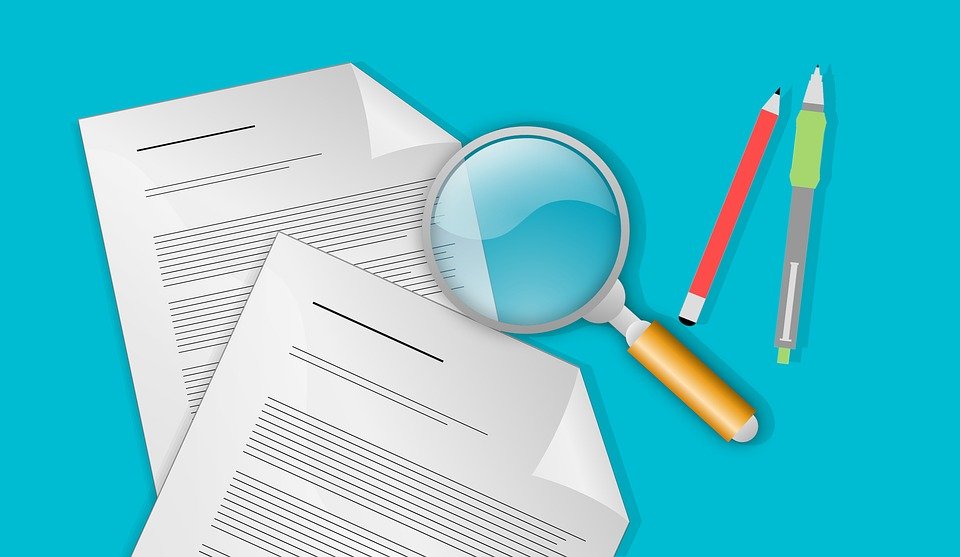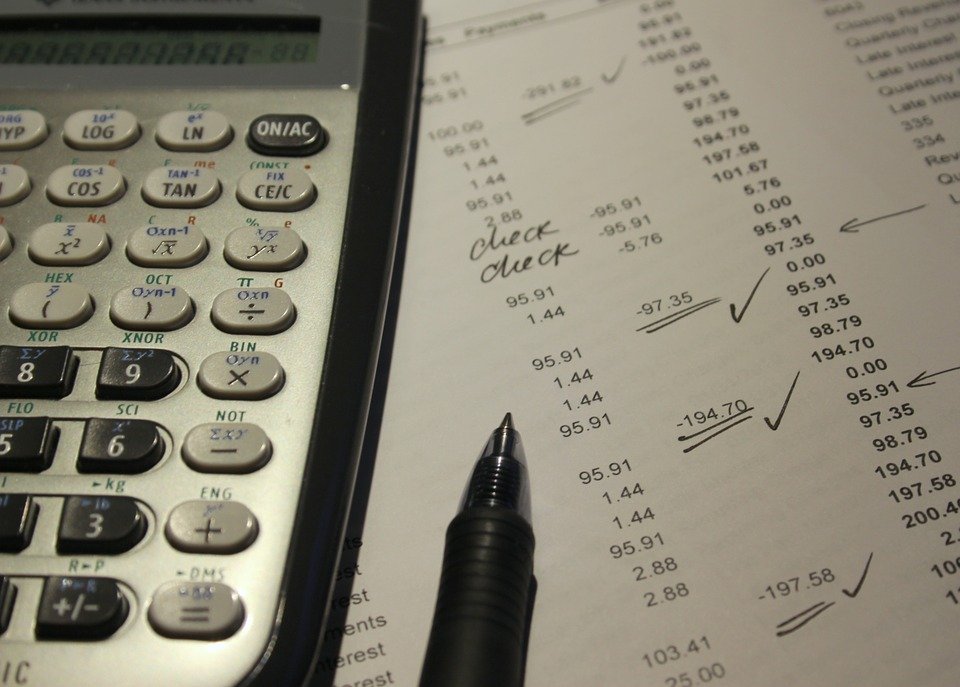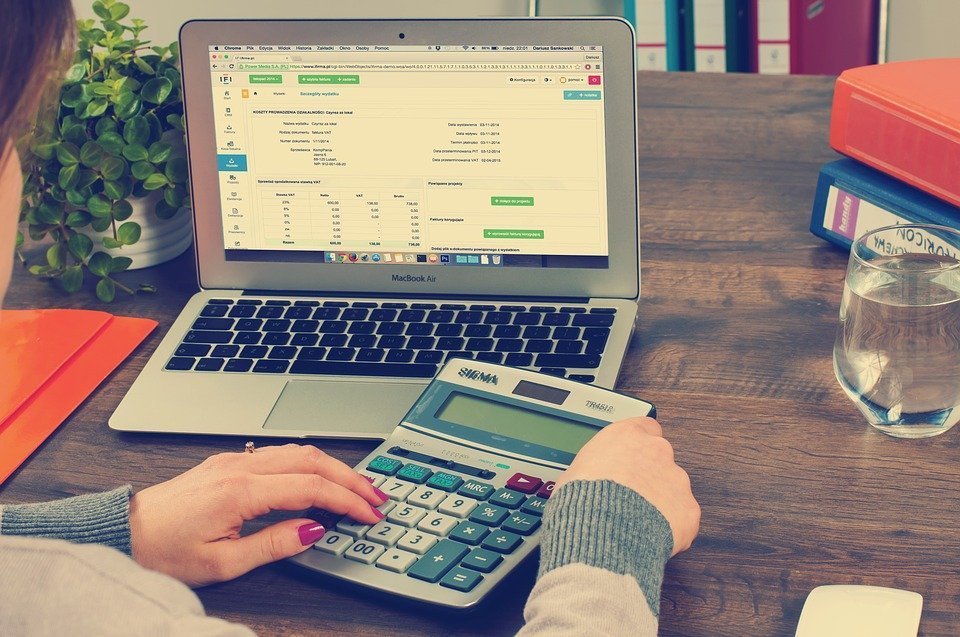
5 Things to Consider When Hiring a CPA for Your Business

Are you thinking about hiring to a Certified Public Accountant (CPA) to track your business’s financial transactions? Statistics show there are now over 650,000 licensed CPAs in the United States. But you shouldn’t choose just any CPA to handle your business’s accounting. Rather, you should consider the five following things when hiring a CPA.
#1) Certification
First and foremost, make sure the CPA is actually a CPA and not just an accountant. While requirements vary from state to state, most places require CPAs to have 150 semesters of college education, one year of accountant-related experience and pass an exam known as the Uniform Certified Public Accountant Examination. As a result, CPAs have the knowledge and skills needed to help your business succeed.
#2) Location
In addition to certification, you should also consider a CPA’s location. If a CPA is located 100 miles away from your business, you probably won’t see him or her very often if at all. The CPA may still offer his or her services to your business, but all communications will be conducted either by phone or over the internet. And depending on the nature of your business, the lack of face-to-face meetings could increase the risk of accounting errors. Therefore, it’s a good idea to hire a CPA who’s located within a reasonable driving distance from your business.
#3) IRS Representation
Hopefully, this doesn’t happen to your business, but it’s a good idea to have a CPA who will represent you if your business is audited by the Internal Revenue Service (IRS). If a CPA isn’t willing to represent you, it’s probably best to look elsewhere.
#4) Software Used
What type of accounting software does the CPA use? Some CPAs will only use their software, whereas others are willing to use your business’s software. If you use Quickbooks Desktop, for example, you can create an accountant’s copy. With an accountant’s copy, you can work on your business’s books simultaneously with your CPA.
#5) Fees
Of course, you should consider a CPA’s fees and whether they are aligned with your business’s budget. Although there are exceptions, most CPAs charge either a flat fee or a per-hour fee. A typical flat fee charged by a CPA for an itemized tax return is about $300 to $400. If a CPA charges by the hour, you can expect to pay around $50 to $150 per hour of accounting work.
Have anything else that you’d like to add? Let us know in the comments section below!

Accounts Receivables vs Accounts Payables: What You Should Know

Accounts receivables and accounts payables are two key concepts of accounting. When keeping track of your business’s financial transactions, you’ll probably come across both terms. While accounts receivables and accounts payables sound similar, though, they are completely different. As a result, you should familiarize yourself with these two terms and their respective meaning. Only then will you be able to use them in your business’s accounting practices.
What Are Accounts Receivables?
An accounts receivable is money that a customer or client owes your business. If you sell a product or service to a customer and allow the customer after the product has been delivered or the service has been performed, the customer will owe your business money. That money is considered an accounts receivable until the customer has paid and fulfilled his or her obligation to your business.
What Are Accounts Payables?
An accounts payable, on the other hand, is money that your business owes to a supplier or vendor. It’s not uncommon for suppliers or vendors to their products or services on credit. In other words, they’ll deliver the product or perform the service for your business while allowing you to pay at a later date. In cases such as this, the transaction is recorded as an accounts payable because your business owes the supplier or vendor money for the purchased product or service.
The Differences Between Accounts Receivables and Accounts Payables
There are a few key differences between accounts receivables and accounts payables, the most notable being the way in which they are recorded. Accounts receivables are recorded as a current asset, whereas accounts payables are recorded as a current liability.
You can also use accounts receivables to secure financing for your business — something that’s not possible with accounts payables. Factoring, for example, involves the sale of accounts receivables to a factoring company. Accounts receivables financing is an alternative financing solution that involves the use of accounts receivables as collateral for a loan.
Accounts receivables and accounts payables have contrasting effects on your business’s cash flow. When your business generates accounts receivables, its cash flow will decrease. When your business generates accounts payables, its cash flow will increase.
Not all businesses have accounts receivables or accounts payables. Most businesses, however, will eventually come across either one or both of these transactions, in which case it should be properly recorded on a balance sheet.
Have anything else that you’d like to add? Let us know in the comments section below!

How to Check Your Business Credit

Building and maintaining good business credit will open the doors to new financing opportunities for your business. With strong business credit, you’ll have an easier time securing loans, lines of credit and even equity-based investments. But how exactly do you check your business credit? While some entrepreneurs assume the steps to checking business credit are the same as checking personal credit, this isn’t necessarily true.
Business vs Personal Credit: What’s the Difference?
First and foremost, it’s important to understand the difference between business credit and personal credit. Personal credit is credit that’s associated with your own Social Security number. Business credit, on the other hand, is credit that’s associated with your business’s Employer Identification Number (EIN).
If you operate your business as a sole proprietorship, you may not have an EIN, in which case your only financing option may be to a loan or line of credit under your Social Security. And whenever you secure financing using your Social Security number, your personal assets become tied to the associated loan or line or credit, which is why it’s a good idea to use your business’s EIN if available.
Check Business Credit With These 3 Major Credit Bureaus
You can check \your business credit at three major credit reporting bureaus: Dun & Bradstreet, Equifax Business and Experian Business. All three of these bureaus offer business credit reporting services. Just sign up for an account, verify your identity and request a business credit report. Keep in mind that business credit reports aren’t free. They usually cost about $50 to $100. Considering the insight a credit report offers into your business’s financial health, though, it’s a smart investment that will pay off in the long run.
How Often Should I Check My Business Credit?
Checking your business credit can give you a better understanding of your business’s financial health as well as its ability to secure financing. However, some entrepreneurs are reluctant to check their business credit, believing each inquiry will lower their credit score. Whether you’re checking your personal or business credit, though, it shouldn’t lower your credit score. Inquires that you perform are considered soft inquires, which don’t impact your credit score. But if you apply for a loan or line of credit, the lender will run a hard inquiry, which can negatively impact your credit score.
Have anything else that you’d like to add? Let us know in the comments section below!

The 3 Primary Sections of a Cash Flow Statement

A cash flow statement is an essential accounting document that’s used to measure a business’s incoming and outgoing cash. More specifically, it reveals changes in a business’s balance sheet that affect the business’s cash (and cash equivalents). While there are different ways to structure a cash flow statement, however, most consist of three primary sections. As a business owner, you should familiarize yourself with the various sections of a cash flow statement to take advantage of this accounting document.
#1) Investing Activities
The “investing activities” section of a cash flow statement represents the incoming and outgoing cash from investment-related tasks. This includes the purchase or sale of real property, loans given to customers or vendors, and payment associated with corporate acquisitions. Investing activities typically won’t affect your business’s cash flow as much as operating and financing activities, but they can still influence your business’s incoming and outgoing cash. Therefore, you should track them using the “investing activities” section of a cash flow statement.
#2) Operating Activities
The “operating activities” section of a cash flow statement is where you’ll record most of your business’s incoming and outgoing cash. Examples of operating activities to record in this section include payments to vendors, payments to employees, product or service sales and more.
#3) Financing Activities
Finally, the “financing activities” statement of a cash flow statement reflects incoming and outgoing cash associated with raising capital to run your business. Most businesses require at least some capital to get up and running. And even after a business is up and running, it may still need regular funding to sustain its operations. If your business borrows money or funds, you’ll need to record these transactions in the “financing activities” section of a cash flow statement.
Cash Flow vs Profits: What’s the Difference?
It’s important to note that cash flow isn’t the same as profits. While similar, each concept has a unique meaning. Profit, for example, is defined as the difference between a business’s revenue and its expenses over a specified period of time, whereas cash flow is the movement of all incoming and outgoing cash.
By keeping a cash flow statement, you’ll have a better understanding of your business’s financial efficiency. If your business isn’t efficient at spending money to make money, it will struggle to succeed. The first step to improving your business’s financial efficiency, however, is to create and use a cash flow statement.
Have anything else that you’d like to add? Let us know in the comments section below!

Single vs Double-Entry Bookkeeping Systems

Bookkeeping systems can be classified as either single entry or double entry depending on how many times a transaction is recorded. Some business owners and entrepreneurs assume that transactions should be only recorded once. Whether it’s a credit or debit, they only record transactions in once. While this is a viable accounting method, however, it’s not necessarily the best. To choose the right bookkeeping system for your business, you must first understand the differences between single-entry and double-entry systems.
What Is a Single-Entry Bookkeeping System?
As the name suggests, a single-entry bookkeeping system is an accounting method in which each of your business’s financial transactions is recorded once, typically either in a journal or general ledger. Whether it’s a debit or credit, you only record transactions once when using a single-entry bookkeeping system. As a result, it’s a simple and easy way to keep track of your business’s financial transactions.
What Is a Double-Entry Bookkeeping System?
A double-entry bookkeeping system, on the other hand, is an accounting method in which each of your business’s financial transactions are recorded twice. With a double-entry bookkeeping system, each financial transaction is recorded in two separate accounts.
Why would you need to record financial transactions twice exactly? Well, if you’re paying off a loan, using a double-entry bookkeeping system ensures that all payments made towards the loan lower the amount of money you owe the lender while also reducing your business’s total money.
The key thing to remember with double-entry bookkeeping is that all transactions are recorded as both a debit and a credit. Additionally, all transactions are placed in two separate accounts. You can think of double-entry bookkeeping as a way of tracking inventory and accounts receivables.
Choosing the Right Bookkeeping System
After reading this, you might be wondering whether to use a single-entry or double-entry bookkeeping system for your business. While some business owners and entrepreneurs prefer the simplicity of a single-entry system, a double-entry system usually offers the best results.
If you use a double-entry bookkeeping system, you’ll be able to calculate your business’s profits and losses more accurately and with greater ease. The only downside to using a double-entry bookkeeping system is that it’s more time consuming and tedious to record financial transactions, as each transaction is recorded twice. But if you’re willing to invest the necessary time, you’ll probably discover that it’s well worth it.
Have anything else that you’d like to add? Let us know in the comments section below!

What Is a General Ledger?

When running a business, you’ll need to keep records of all incoming and outgoing money. While there are numerous documents available with accounting, general ledgers are arguably the most important. They offer a snapshot of your business’ financial health, revealing its income as well as expenses. As a business owner, though, you might be wondering what’s included in a general ledger and why they are used.
Overview of General Ledgers
A general ledger is a document containing all the financial transactions associated with your business’s operations. In accounting software, including Quickbooks, it serves as the repository for all transactions. In other words, it summarizes your business’s financial transactions, allowing you to quickly and easily see all incoming and outgoing money.
Withing a general ledger are individual accounts, known as ledger accounts. Each transaction is essentially a ledger account. A general ledger, on the other hand, is a collection of ledger accounts.
The Elements of a General Ledger
While not all general ledgers are the same, most feature several common elements, including the following:
- Assets
- Liabilities
- Equity
- Revenue
- Expenses
- Gains
- Losses
Benefits of Using a General Ledger
Using a general ledger can provide you with a better understanding of your business’s financial health. Granted, you can always review your bank statements and credit card statements, but this is often tedious and time consuming. A faster and easier way to gauge your business’s financial health is to use a general ledger. Running a general ledger report will provide a snapshot of your business’s financial transactions — all in a single, easy-to-access document.
How to Access General Ledger in Quickbooks
Assuming you use Quickbooks to keep track of your business’s finances, you can run a general ledger report to view this essential accounting document. In Quickbooks, click “Reports” on the left-hand navigation menu and select “All.” From here, scroll down and click the link labeled “For My Account.” Next, choose “General Ledger,” after which you’ll need to select a date range and specify either “Cash” or “Accrual” basis. After performing these steps, click “Run Report” to generate a general ledger of your business’s financial transactions.
Keep in mind that you’ll only see transactions in the general ledger that occurred during the specified date range. If you want to see a list of all transactions conducted by your business in 2018, for instance, you’ll need to set the date range from Jan. 1, 2018 to Dec. 31, 2018.
Have anything else that you’d like to add? Let us know in the comments section below!

Is Accounts Receivables Financing a Smart Funding Solution?

It’s a paradox that countless business owners encounter: You need money to make money. If you’re starting a business, you’ll need to purchase goods and services to get your operations up and running. If your business allows customers to pay after their product has been delivered or their service has been performed, however, accounts receivables financing may offer an effective way to fund your new business.
What Is Accounts Receivables Financing?
Accounts receivables financing is a commercial funding solution that involves borrowing money from a lender while using your business’s accounts receivables as collateral for the loan. To better understand accounts receivables financing, you should first look at accounts receivables.
Basically, accounts receivables are invoices for money owed to your business by your customers. If you’ve sold a product or service to a customer and are awaiting his or her payment, you can use that invoice as collateral for a secured loan. If you don’t pay back the loan, the lender can claim ownership of the invoices and, therefore, seek collection from the respective customer or customers.
Accounts Receivables Financing Pros
Accounts receivables financing can ease the burden of securing capital to fund your business. Lenders are particularly cautious regarding the businesses to which they lend money, especially if that money is in the form of an unsecured loan. With unsecured loans, the lender is essentially hoping that the business doesn’t fail. If the business fails, the lender may not recoup the loaned money.
Accounts receivables financing, however, is a form of secured lending, so it’s easier to acquire than other, unsecured loans. When you apply for accounts receivables financing, you provide the lender with rights to your business’s outstanding invoices in the event you don’t follow through repayment.
You’ll also find that accounts receivable financing offers low interest rates. In many cases, the interest rate for an accounts receivables loan is less than 5%.
Accounts Receivables Financing Cons
On the other hand, accounts receivables financing isn’t viable for all businesses. If your business demands payment from customers upon delivery or completion of the purchased goods or services, you may not have any outstanding invoices, in which case you won’t be able to use accounts receivables financing.
But if your business collects outstanding invoices, accounts receivables financing could be a smart decision. As revealed here, it’s easy to obtain and offers low interest rates.
What do you think of accounts receivables financing? Let us know in the comments section below!

Equity vs Debt Financing: What You Should Know

If you’re in the early stages of launching a new business, you’ll need to raise capital to cover expenses like payroll, inventory, insurance, equipment and more. There’s an old saying that it takes money to make money. Regardless of what type of business you intend to run, you’ll need to purchase products and services to get it off the ground. With that said, there are different financing options available for new businesses, including equity and debt financing.
What Is Debt Financing?
Debt financing refers to borrowing money from a lender under the agreement that you’ll repay it according to the lender’s terms. It’s called “debt financing” because it requires businesses to take on debt. The lender loans you money to use for your business, but you’ll have to pay it back — along with interest in most cases — to comply with the terms and conditions created by the lender.
Not all debt financing is the same. Granted, your business will take on debt when using debt financing, but some forms are easier to obtain than others. Secured debt financing, for example, requires the use of assets with a monetary value as collateral. You essentially “secure” this form of financing using collateral. As a result, banks and lenders have more lenient requirements for secured debt financing as opposed to unsecured debt financing, the latter of which doesn’t use or otherwise require collateral.
What Is Equity Financing?
An alternative to debt financing is equity financing. Equity financing can provide you with money to launch your new business as well, but it’s a completely different form of funding. With equity financing, neither you nor your business will take on debt. Instead, it allows you to sell some of your business’s shares to a financial institution or investment firm.
It’s called “equity financing” because it involves the sale of a company’s equity. Therefore, you won’t own 100% of your business if you use this method to raise capital. But the good news is that you won’t take on debt from equity financing, either.
So, should you use debt financing or equity financing to raise capital for your new business? It really depends on the type of business you operate as well as your own goals and objectives. Some businesses prefer the simplicity of debt financing, whereas others prefer equity financing. Assess your business and goals and objectives to determine which financing vehicle is right for you.
Have anything else that you’d like to add? Let us know in the comments section below!

What Is a Fixed Asset in Accounting?

From retail stores and coffee shops to e-commerce stores and construction companies, all businesses have assets. In accounting, an asset any resource owned by a business that offers future value. In other words, it’s something that a business can convert into revenue. There are different types of assets used in business accounting, however, one of which is fixed. So, what are fixed assets exactly, and how do they compare to other types of assets?
Fixed Assets Explained
Also known as tangible assets, fixed assets are assets — resources of future value owned by your business — that cannot be converted into money within a short period of time, typically a year. An example of a fixed asset is heavy machinery owned by a construction company. Even if a piece of heavy machinery has monetary value, it may take a while for the construction company to sell. Therefore, it’s considered a fixed asset.
Another example of a fixed asset is a fleet of trucks owned and operated by a transportation company. Like heavy machinery, trucks cannot be easily sold or otherwise converted into cash, so they are considered a fixed asset. Regardless, all fixed assets are defined by their ability to be converted into cash within a short period of time.
Recording the Depreciation of Fixed Assets
Because they cannot be easily converted into cash within a short period of time, you should calculate the depreciation of your business’s fixed assets for tax purposes. The Internal Revenue Service (IRS) allows businesses to deduct depreciation of fixed assets from their taxes.
If you use Quickbooks Desktop to keep track of your business’s finances, you can easily calculate the depreciation of your fixed assets. The software contains a special feature known as Fixed Asset Manager (FAM) that uses up-to-date IRS standards to calculate how much your fixed assets have depreciated.
It’s important to note that FAM isn’t available in all versions of Quickbooks. You’ll only find this feature in Quickbooks Premier Accountant, Enterprise Accountant and Enterprise.
Fixed vs Current Assets
Current assets, on the other hand, are assets that can be converted into money within a short period of time. Inventory, for example, is typically considered a current asset. A retail apparel store may have a surplus of shirts and jeans. Because the store sells these items, they are considered a current asset.
Have anything else that you’d like to add? Let us know in the comments section below!

Guide to The Weighted Average Cost (WAC) Accounting Method

Weighted average cost (WAC) is an accounting practice used extensively by retailers, e-commerce companies and other businesses that sell physical products. Used by business business-to-consumer (B2C) and business-to-business (B2B) companies, it provides a better understanding of a business’s cost of goods available and its inventory. To learn more about the WAC accounting method and how it’s performed
Calculating WAC: What You Should Know
To calculate WAC for your business, you must take your cost of goods available and divide it by the number of units available. This number will reflect the WAC for each of those available units. Still confused? Here’s an example: If your cost of goods available is $50,000 and you have 5,000 units of that product available, the WAC per unit of that product is $10.
Benefits of Using the WAC Accounting Method
There are several benefits to using the WAC accounting method, one of which is simplicity. From an outsider’s perspective, calculating WAC may seem like a tedious and difficult process, but it’s actually quite easy. The only numbers required to calculate WAC are the cost of goods available and the number of units available. Once you’ve identified those two numbers, you can calculate the WAC for the product.
Using the WAC accounting method can also help you understand how much it costs to produce a product, per unit. When a business handles hundreds or thousands of orders per day, it may struggle to keep track of costs. This is where the WAC is helpful, however. This accounting method attaches a per-unit cost to the product, allowing businesses to see how much they spend to product or acquire a product that they sell.
Cost of Goods Available Isn’t the Same as COGS
It’s important to note that cost of goods available is not the same as cost of goods sold. The cost of goods sold (COGS) refers to the value of the product’s sales. In comparison, cost of goods available refers to the value of inventory in addition to the cost of goods purchased.
Hopefully, you have a better understanding of the WAC accounting method after reading this. To recap, this method is used to calculate the “weighted average cost” of a specific product. It’s performed by taking the cost of goods available and dividing it by the number of units available, resulting in the product’s WAC.
What are your thoughts on the WAC accounting method? Let us know in the comments section below!
